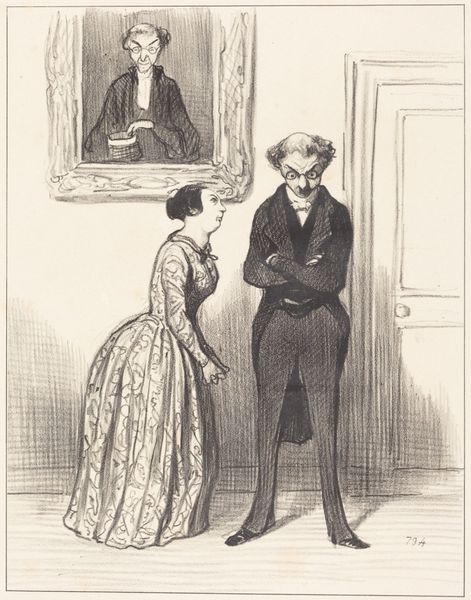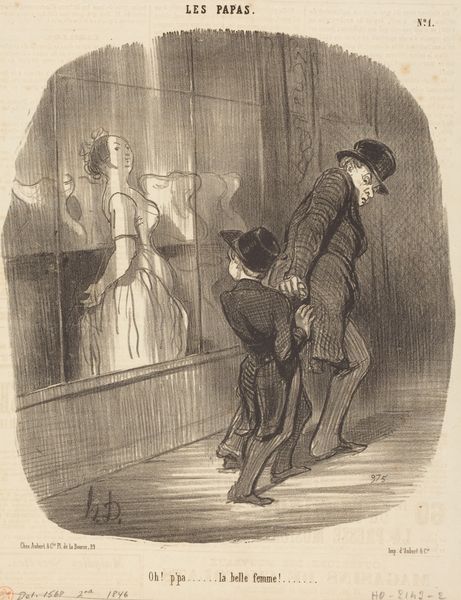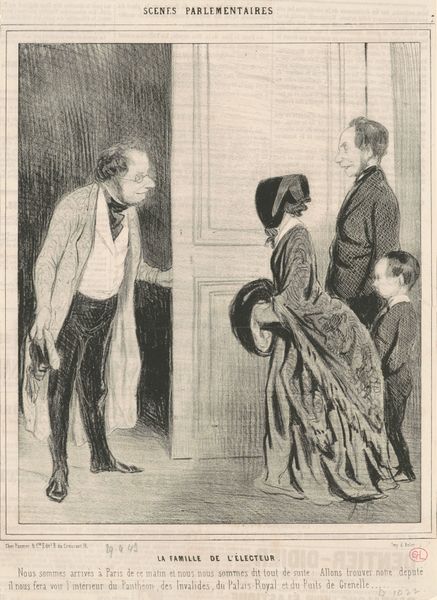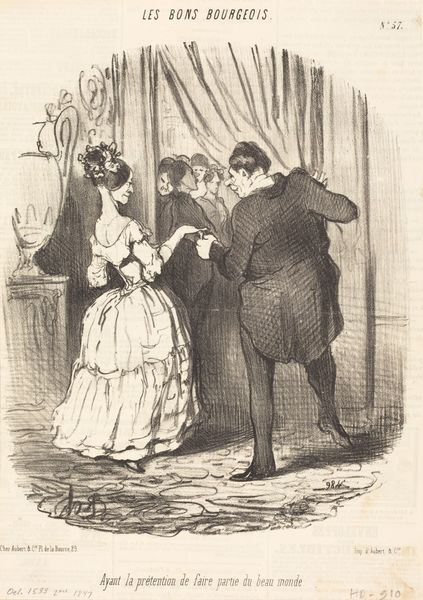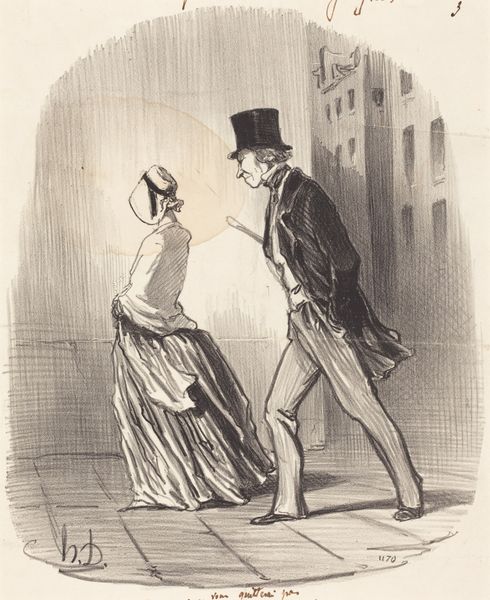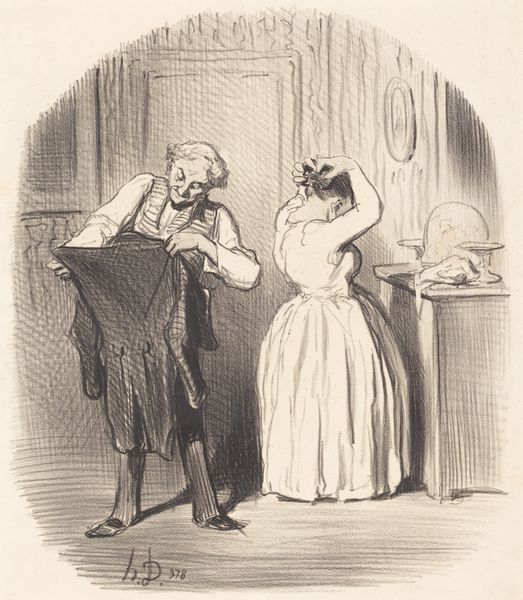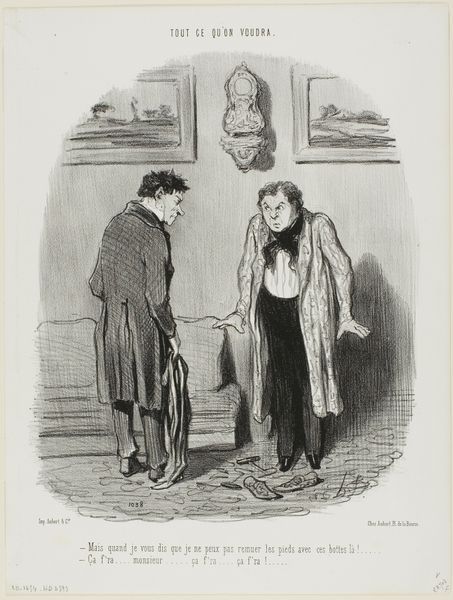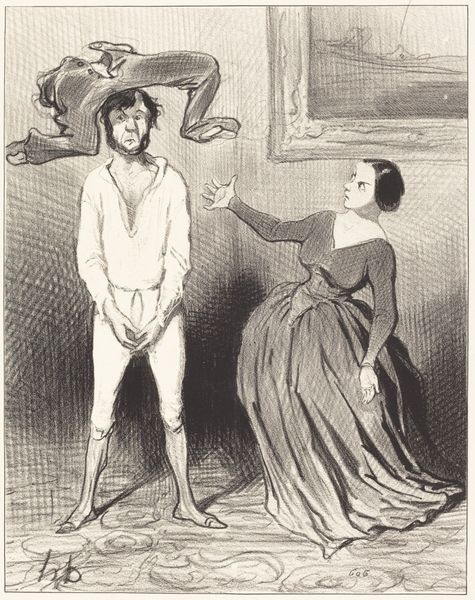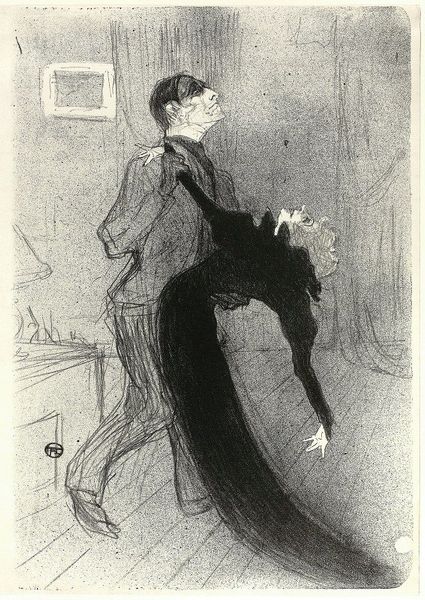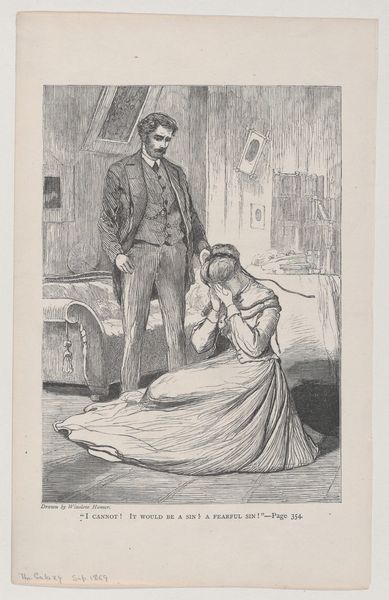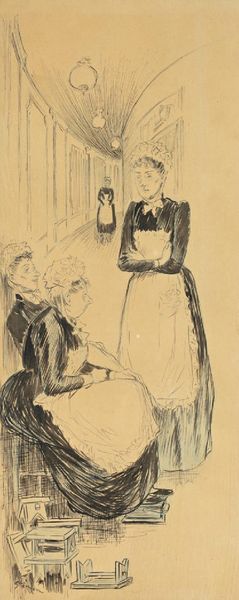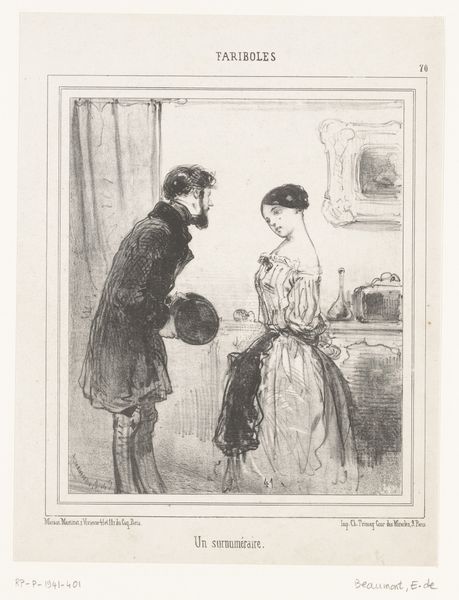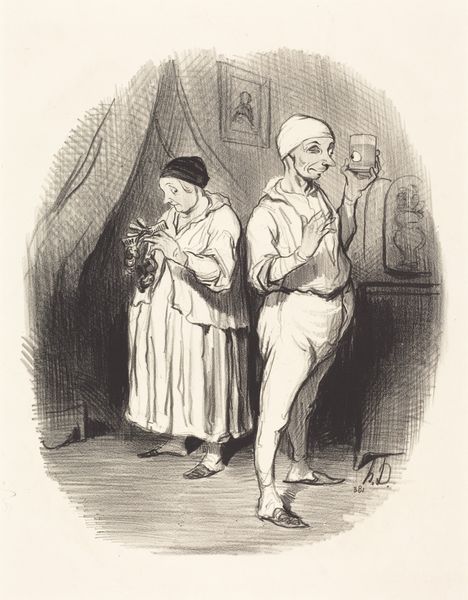
lithograph, print, pencil
#
portrait
#
16_19th-century
#
lithograph
# print
#
caricature
#
pencil sketch
#
character sketch
#
romanticism
#
pencil
#
portrait drawing
#
genre-painting
Copyright: National Gallery of Art: CC0 1.0
Curator: Well, what strikes you immediately about this lithograph? It's called "C'est singulier... il ne me vient plus d'idées... que..." by Honoré Daumier, created in 1844. Editor: An awkward tension, certainly. The figures are disconnected; a silent drama plays out with the woman’s averted gaze and the man’s simmering annoyance. The use of monochrome adds a certain severity to the scene. Curator: That’s an interesting point about the silence, the drama. This print is, on its surface, about artistic frustration. The title translates roughly to "It's strange... I can't think of anything... except..." Editor: And except what? It leaves us hanging, reflecting, perhaps, the artist's own struggle. The print invites consideration of the social expectations placed on individuals and particularly on women. Note how the woman is confined by her elaborate dress, while the man is hemmed in by class constraints; the very act of observation is coded here. Curator: Daumier, during this period, was often working for periodicals like "Le Charivari." His art provided satirical commentary on the bourgeoisie, on social customs, and especially, legal injustices. Look at the man's clothes and bearing – and juxtapose these against the image in the background; that work references landscape, wealth, nobility, even leisure. Editor: Precisely! He utilizes caricature here, right? That stern expression exaggerates his attitude, implying the restrictive conventions suffocating the social life. He appears trapped. She looks imprisoned. The background landscape that you rightly identified might, indeed, represent all of their absent, unrealizable opportunities. Curator: Indeed, we can appreciate the sharp criticism beneath Daumier's technique; his artistic critique is biting and socially relevant. I agree – the artist, working in lithography, a medium capable of mass production, disseminates dissent effectively! Editor: And with that biting wit, we're reminded that some social frustrations sadly remain unchanged across time. Even now, art allows us to view historical oppression to fuel change in the present. Curator: Absolutely. It underscores the vital role art plays in catalyzing critical conversations and in addressing systemic inequalities through impactful imagery.
Comments
No comments
Be the first to comment and join the conversation on the ultimate creative platform.
